The Emory Badge
Karen, Chris, Jessica, Tamara, Kendra
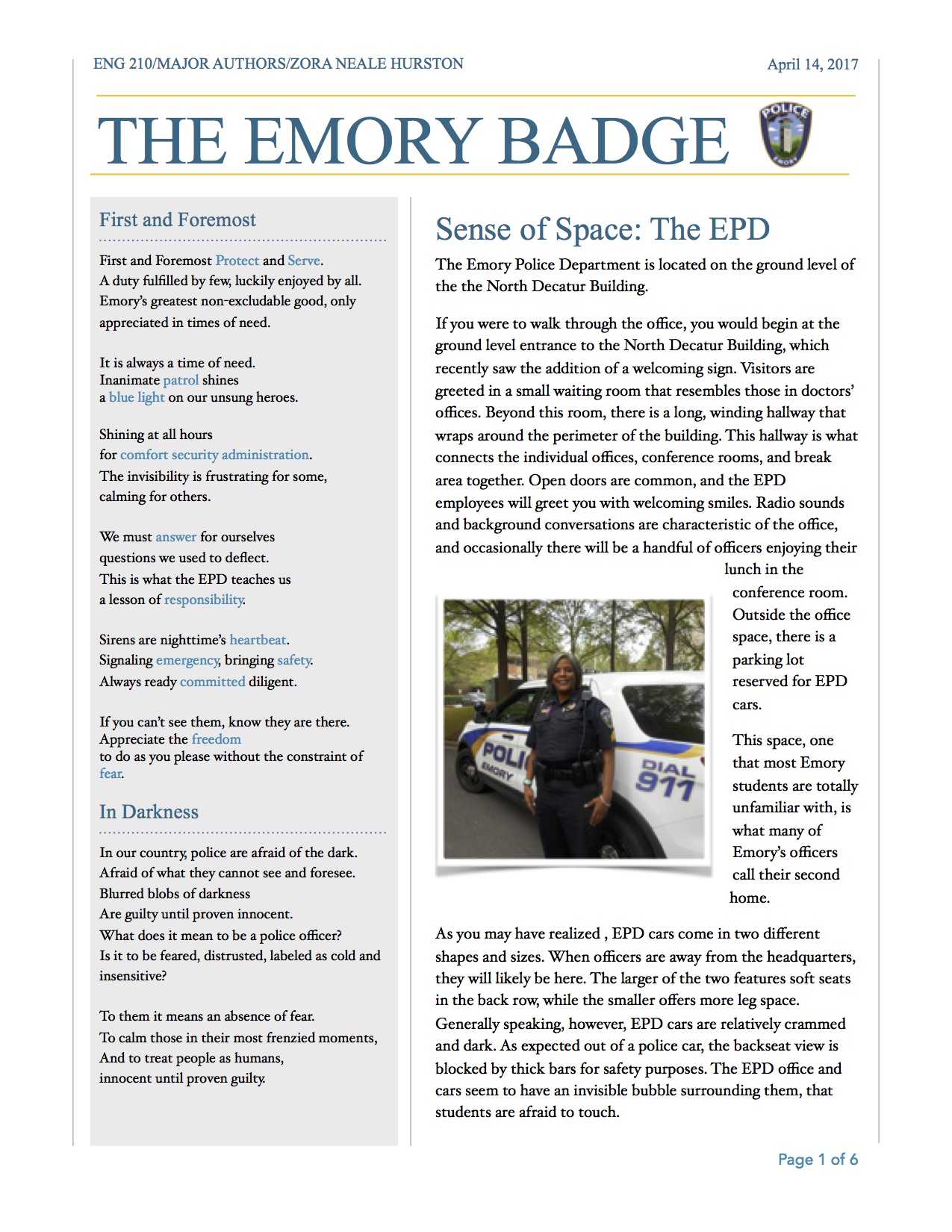
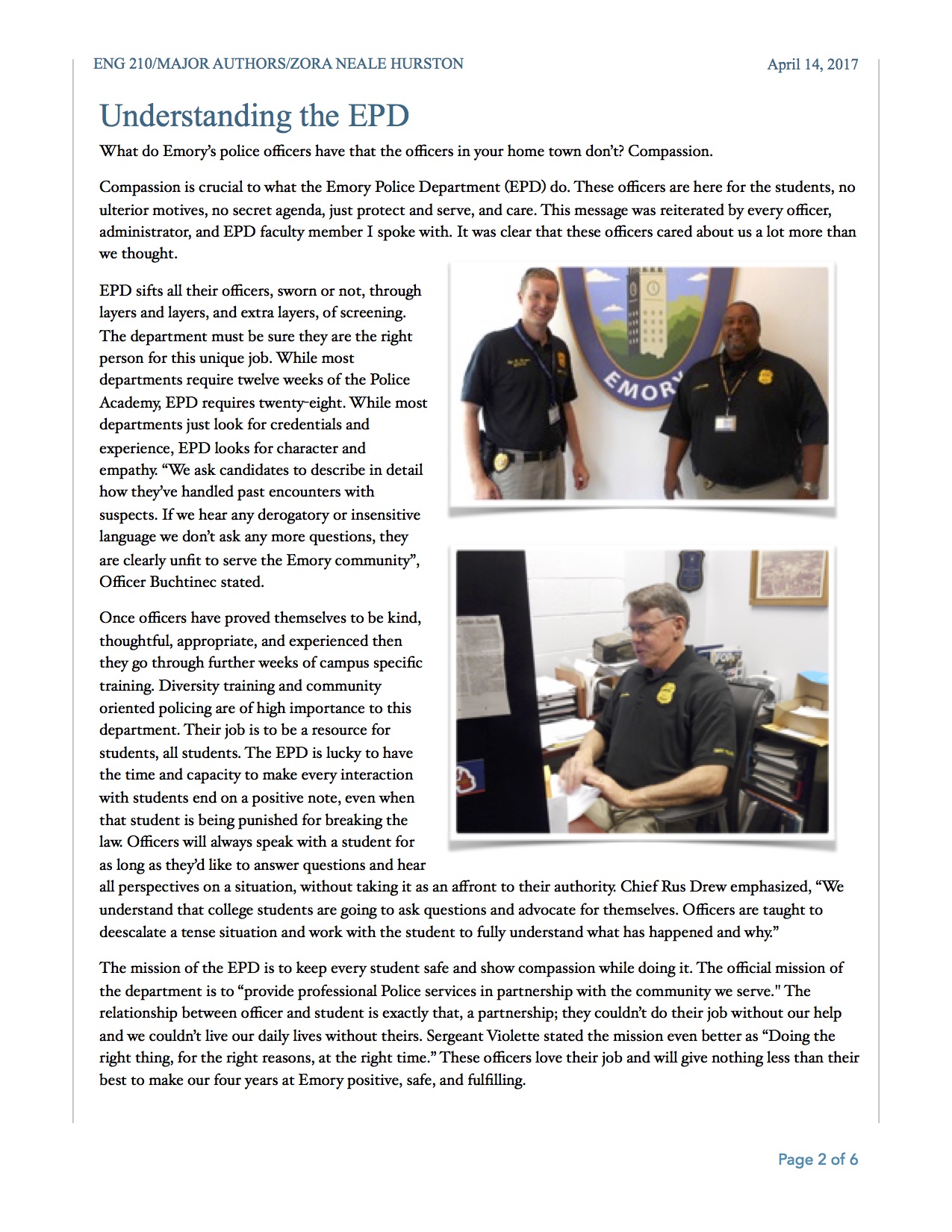
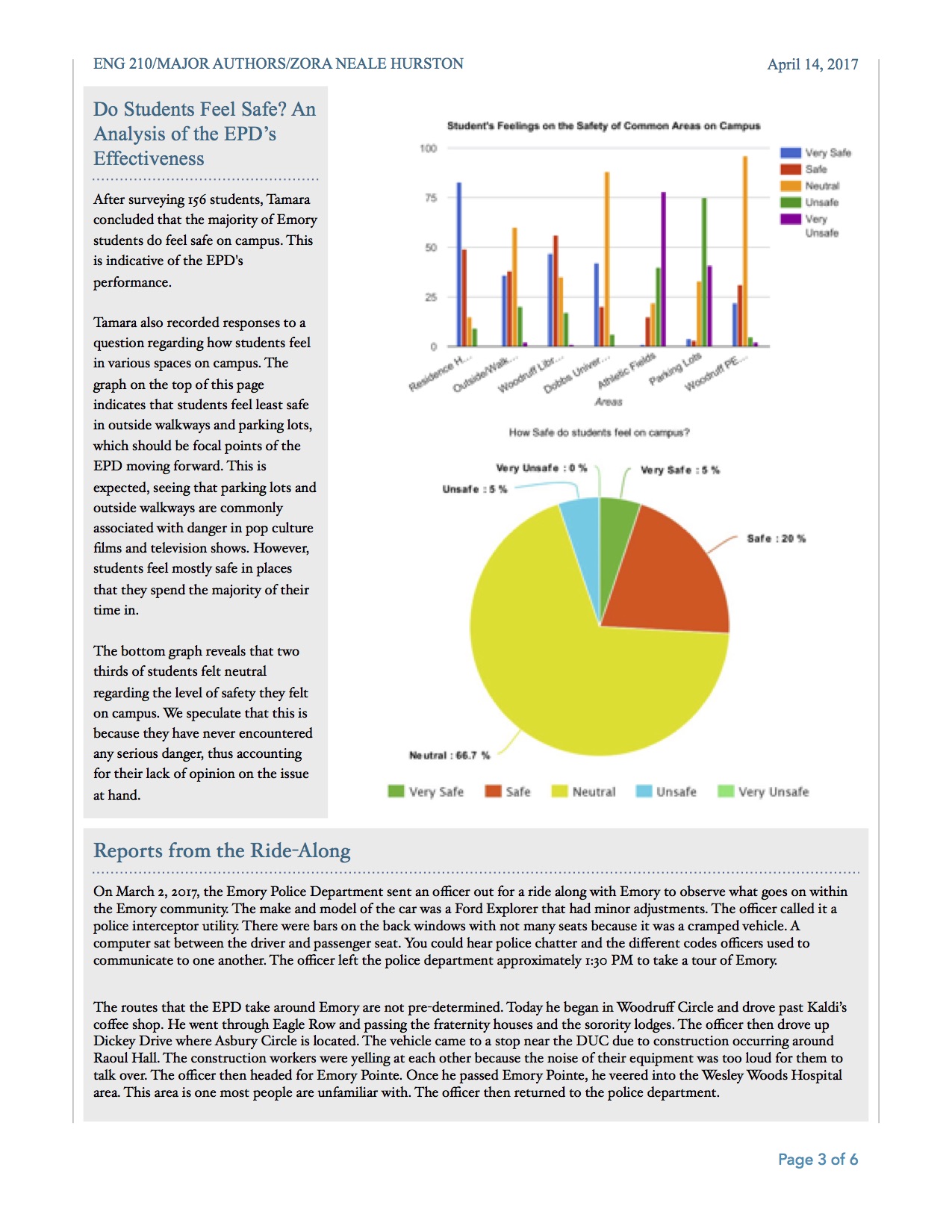
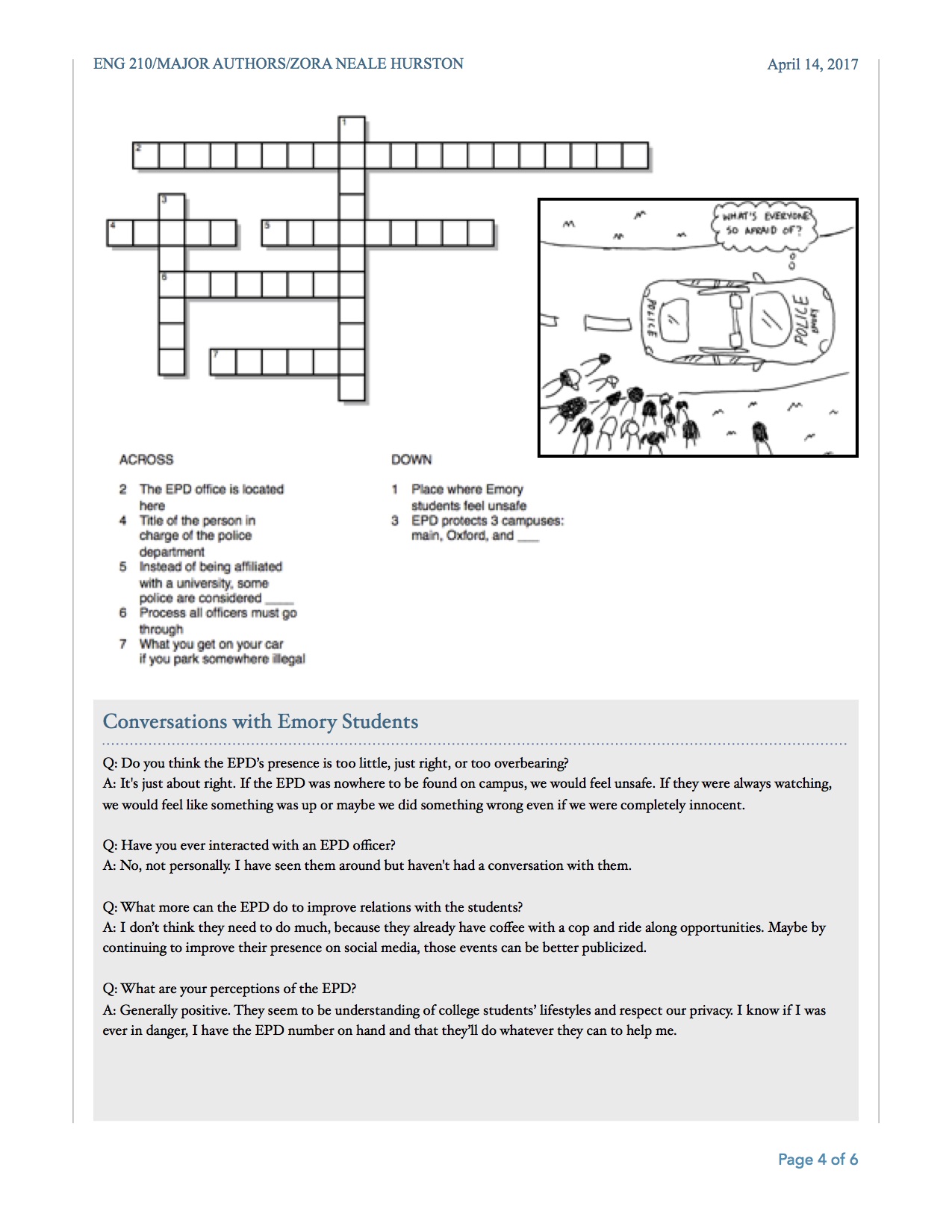
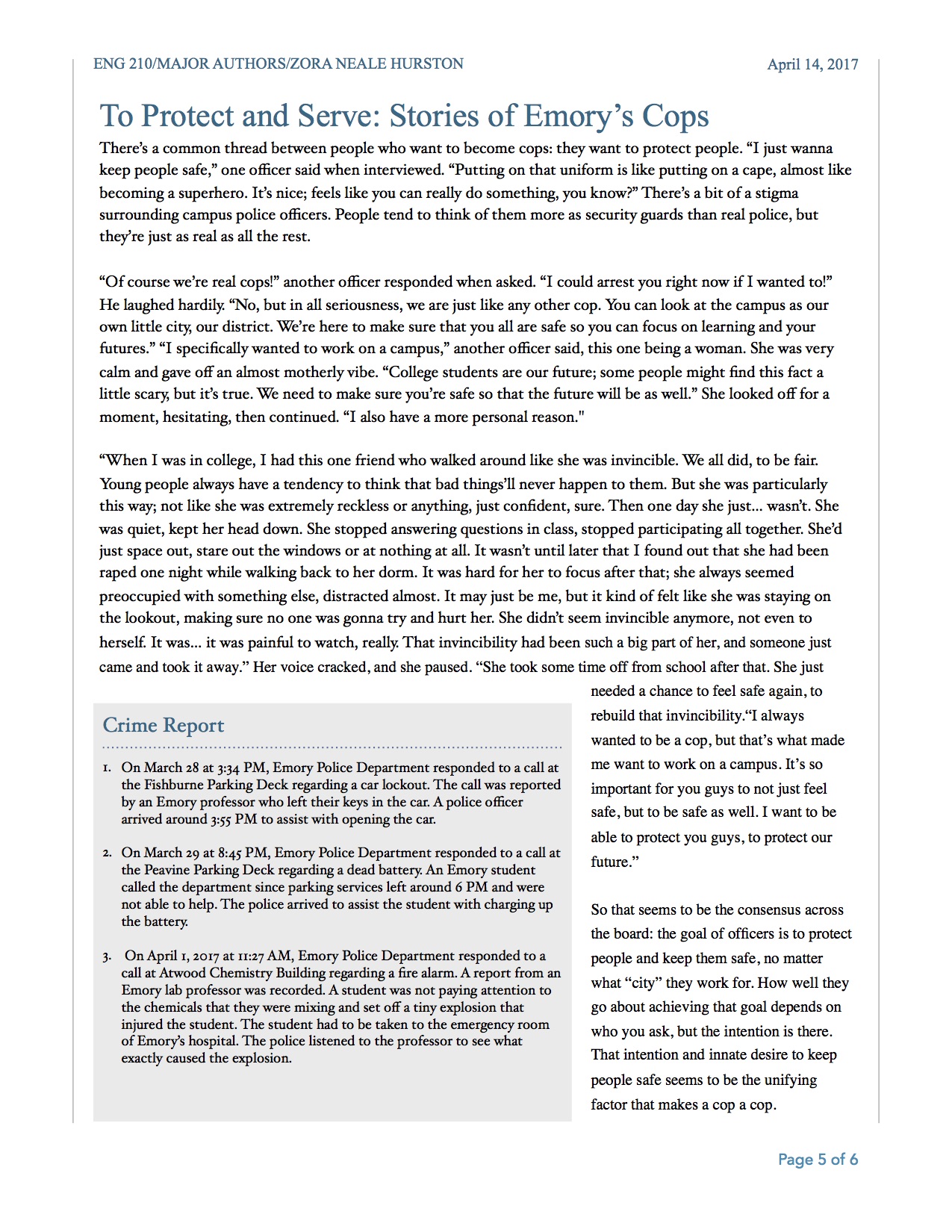
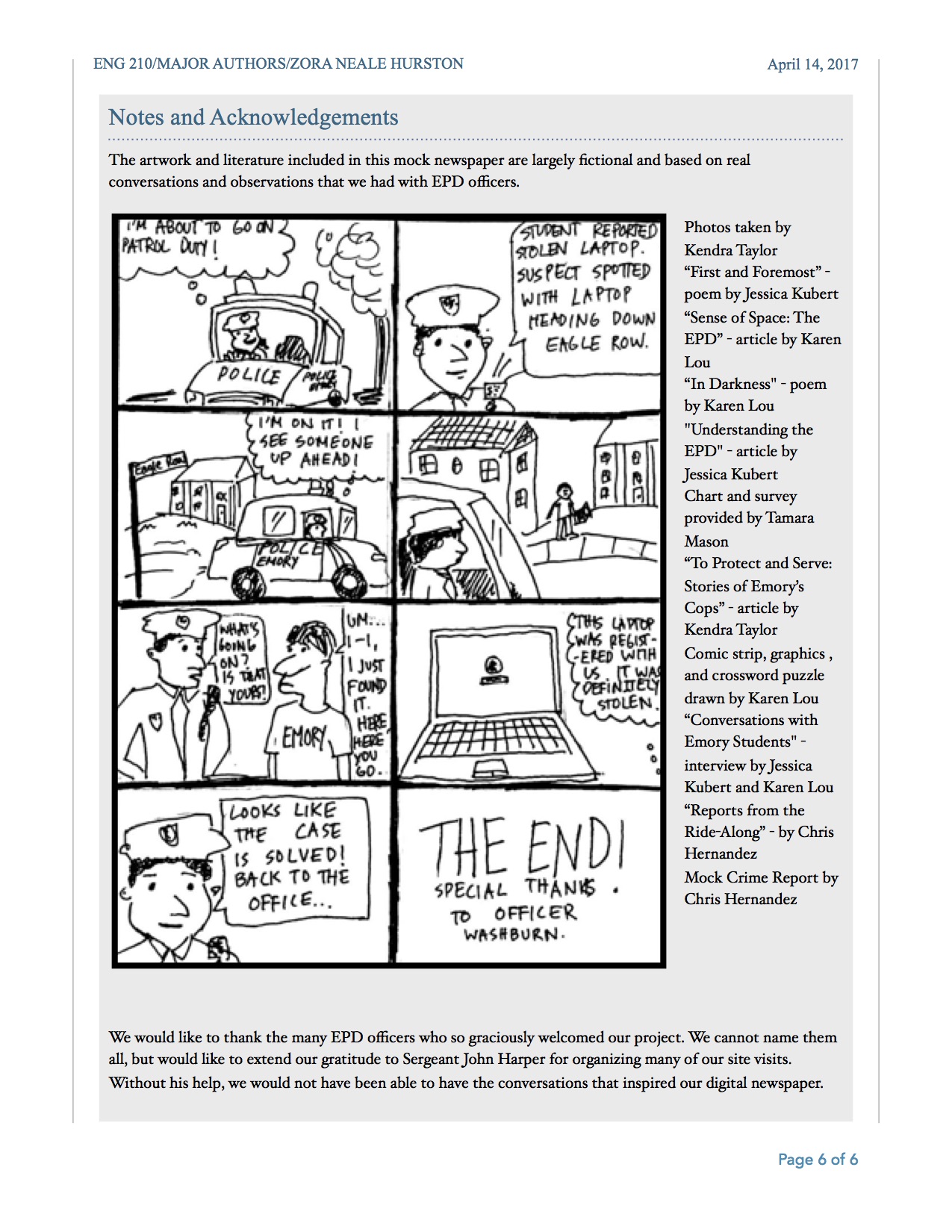
Collective Artist Statement
We had many goals going into the site visits and research of the Emory Police Department (EPD). Our community of interest includes the officers, volunteers, and employees of the EPD and the people served by the department, namely students. Through interviews and observation, we attempted to gain insight into a relatively privatized part of Emory’s campus and understand how students feel about the work done by the EPD. Our site visits included tours of the department, ride alongs, Coffee with a Cop meetings, surveys of student populations, conversations with students, analysis of annual reports, conversations with students, and more. Since our collection process was so diverse we felt the best way to capture the information and our interpretation of it would be through a mock newspaper, titled The Emory Badge.
The Emory Badge will serve to convey a message of understanding and cooperation amongst the EPD and the Emory students through articles, poems, short stories, comics, photographs, graphs, and more. Each group member will be able to contribute to a specific aspect of the newspaper which will help us accomplish our original goal of having a project with breadth and depth. The graphics and layout of the newspaper will be how we direct the reader and viewer to tell a story about our community. The front page will likely have a message from the department and the chief of police about EPD’s mission and the many ways the officers serve their population. This opening will allow our group to convey an important message and leave an impact even if the viewer doesn’t make it to the last page. The photography will be printed in black and white and show officers doing all types of work to emphasize the point that they aren’t just here to discipline the students or serve the university; they will show that they are here to be a resource for and to protect all students. The poem will tie in the aspect of our project that questioned our community’s view on current politics and media surrounding police forces and how that culture has been translated onto Emory’s campus. A poem is a thought-provoking and powerful way to capture a sensitive and contested topic. The graphs will be a more scientific interpretation of our data and research but will be there as an unbiased piece of information and a way for viewers to objectively reflect on our community. Each piece of writing or visual medium within our newspaper will attempt to answer one of our initial questions and interpret the answers we found in a way that is thoughtful, artistic, and memorable.
Our project aims to give the audience a glimpse into what daily life is like for an Emory Police Department officer. Who is the typical EPD officer? What does the job mean to him/her? What is the social structure within the EPD community? In terms of sight, smell, sound, touch, and taste, what kinds of sensory experiences define everyday life in the EPD community? Based on our site visits and interviews, we identified recurring themes of comradery, honor, and order. Above all else, the EPD community appears to value respect. From the motto to various protocol, the EPD always considers respect towards one another, Emory affiliates, and towards citizens of Atlanta in general. We hope our newspaper will visually represent these themes that we identified in the EPD community.
We will not need many materials to make the newspaper. We will probably not use the cottage for much of the project. Most of our time will be dedicated to individual articles and sections. Each member will write their own section to contribute to the project. We will combine the articles, comic strip, photographs and more into a legitimate newspaper; this will most likely take place in the library. We will contact the Emory Wheel for permission to use their equipment to print our newspaper. Karen will be leading the artistic layout of the newspaper as she has experience with newspaper editing back in high school. Kendra is an expert when it comes to photography and uses her keen eye to capture the vision that we want for our newspaper. Chris makes flyers and organizes many programs for the community so he knows the tedious and meticulous details that go into a project. Jessica is the vocal leader of the group and will ensure that each aspect of the project meets the standards set by the group. Tamara will be responsible for data collection and creating graphs. All members will take part in the writing of articles and poems on their chosen topic of interest.
A problem we may come across is printing. We may have trouble getting to print on actual newspaper paper to make it look more authentic, but if push comes to shove, we can always print it on normal paper, which would lessen the effect of the project, but at least it’d be done. As far as the timeline goes, each group member still needs to complete four more site visits. We will get those done before or around the tenth to give ourselves adequate time to prepare the project before the class presentation, which we hope to do on the 20th. This should also give us time to prepare before the exhibit.
Our project is an ambitious one. We felt that because the EPD is such a large, complex community responsible for so many different tasks, it was crucial that our project accurately captures the various dimensions of the EPD and what it does. We tried to do so by arranging site visits in multiple forms – tours of the office, ride alongs, personal meetings with officers, and interviews with Emory students about their perceptions of the EPD. Because our findings from each site visit were so different due to the nature of the visits themselves, we wanted to come up with an artistic adaptation that would address these different findings. Ultimately, we felt that a newspaper, “The Emory Badge” would best represent the multiple facets within the EPD community. Through a newspaper, we would be able to include visual representations of the EPD office, creatively show what daily life is like as an officer, and include poems that address broader concerns regarding police departments in general. Each group member will complete site visits and record notes. These notes will be accumulated into one file so that group members can compare notes and decide what aspects are worth being presented in the newspaper. The newspaper will have many different parts to it and tasks will be divided.